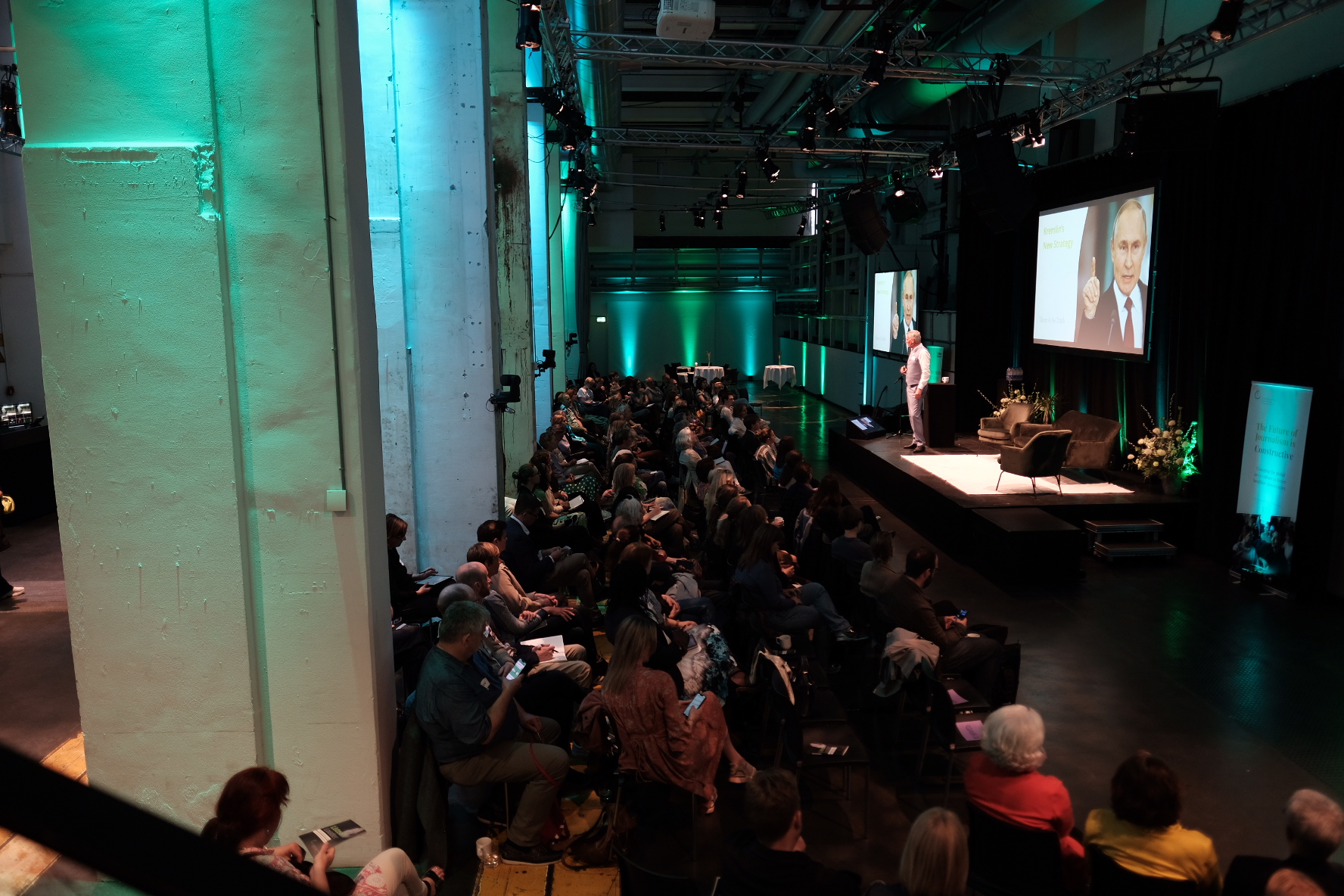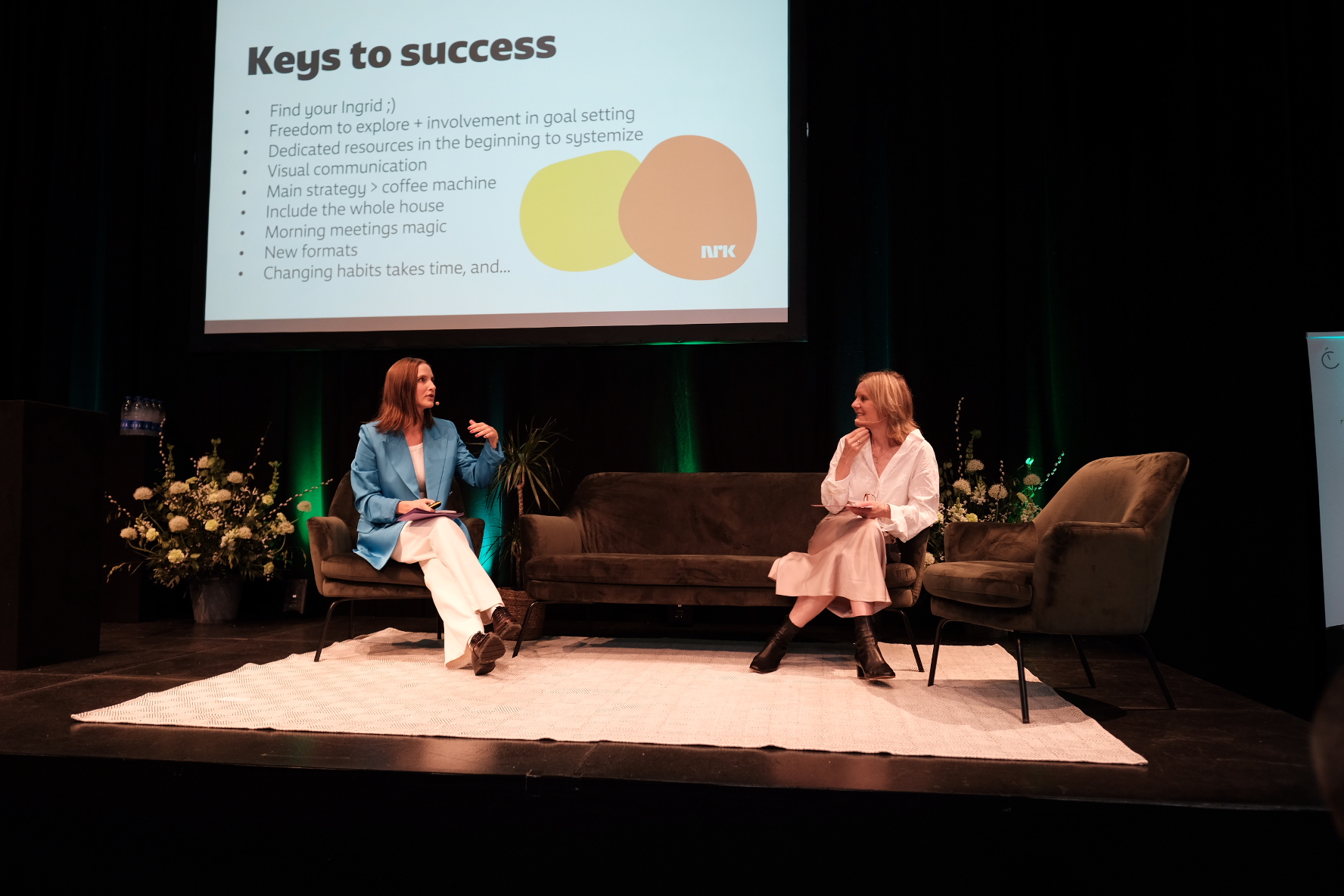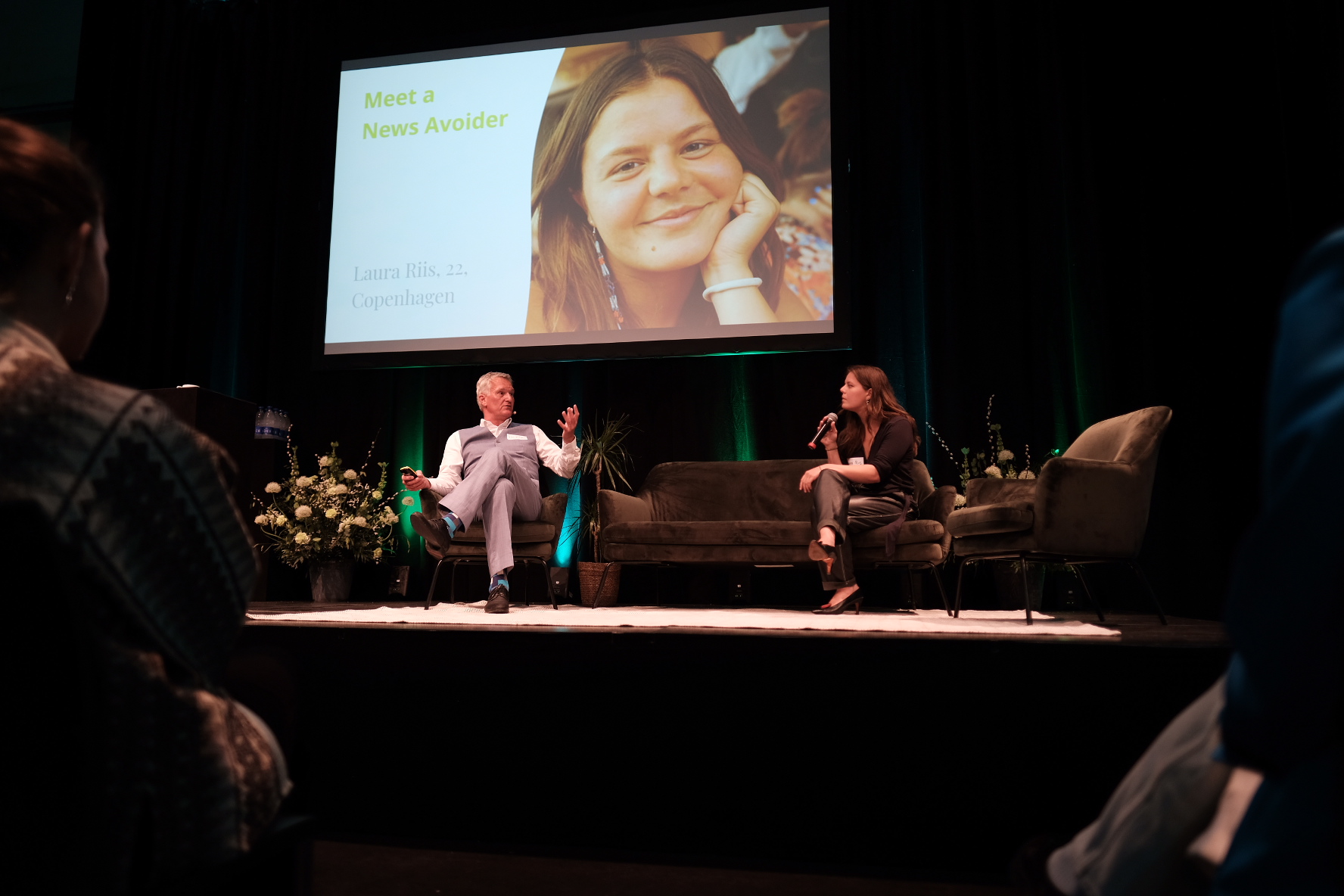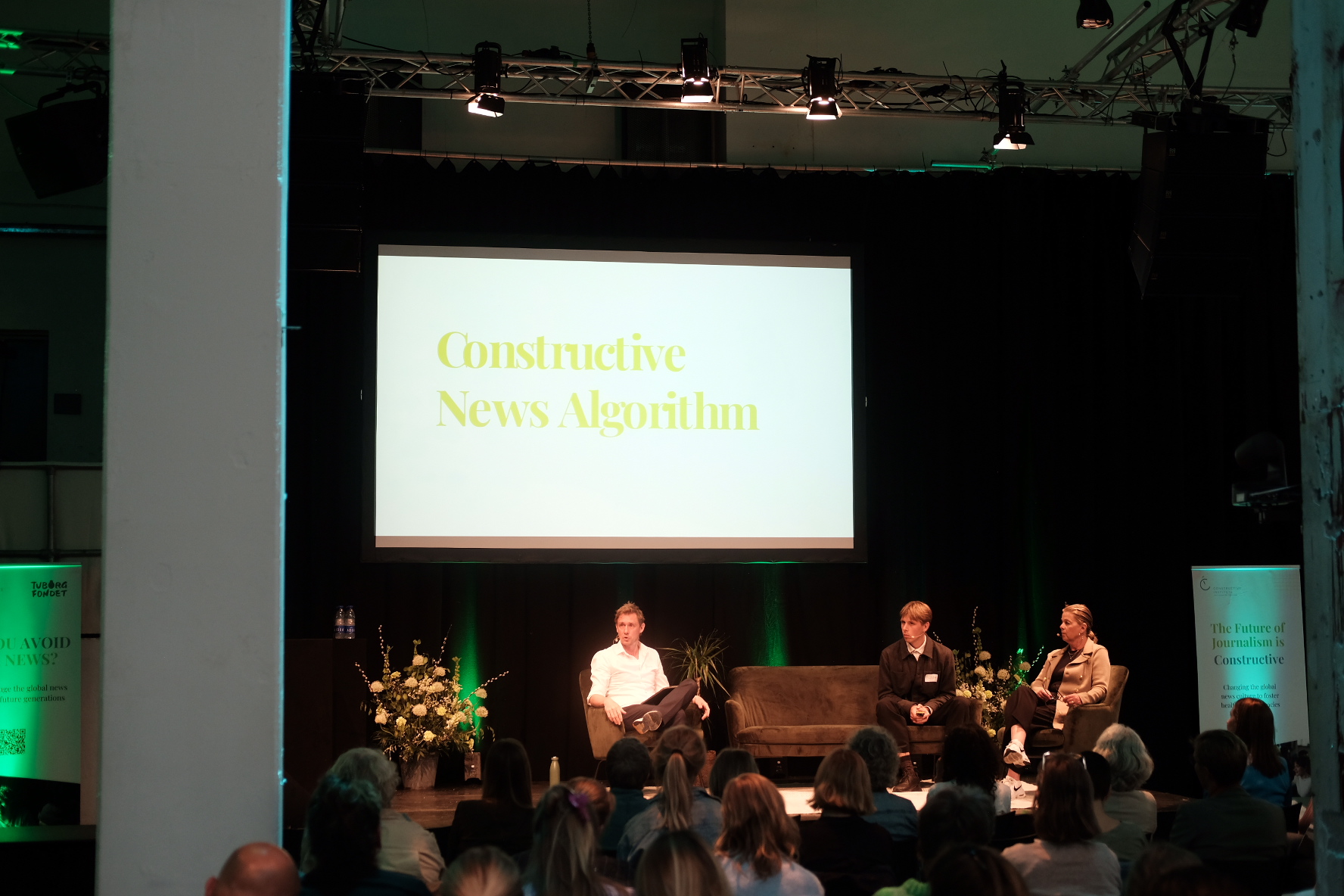Need a good tip? Here’s how newsrooms have battled news fatigue, dwindling sales and growing competition.
Constructive journalism works – and we can prove it. That was the message from news leaders from around the world, who gathered at the first ever Constructive Copenhagen Summit.
May 30, 2024
On May 30, the air in JP/Politikens Hus felt electric. That’s what you get when you bring together 200 curious minds, journalists, editors and students to discuss the future of journalism.

And every single person in that room was witness to something we’ve known all along: Constructive journalism works, hope IS a strategy worth investing in.
We’ve always believed it but at our Summit, we saw proof of it. Especially when Norwegian Broadcasting Company NRK’s news director Helje Solberg together with their lead off constructive editor Ingrid Tinmannsvik said that ever since their newsroom turned constructive, they’ve witnessed a higher average reading time and more satisfied users.

Hans Krabbe from Midtjyllands Avis testified the same during his session on rethinking local journalism. The publication calls itself older than the world’s oldest wheel steamer. “Unfortunately, until lately, our journalism was just as old,” Hans told the audience. It takes time, effort and patience, a lot of it. But none of it was futile, Hans reminded us. Not when they saw the reading time on their e-paper increase or when they noticed an increasing number of young journalists applying to be a part of their newsroom.
In every session through the day – be it on covering climate change, trying new journalism formats or transforming newsroom culture – every speaker said the same thing in different ways:
For far too long, we’ve focused only on the problems. Yes, the problems need to be reported. But so do the solutions, so do the nuances. We can’t stop with reporting just breaking news or doing only investigative stories. There needs to be more to our work and that layer can only come with constructive journalism
Or simply put, as Ulrik Haagerup says, constructive journalism is the lighthouse we need to help guide democracy in the right direction. Now, more than ever, is when we need an active, engaged citizenry to be aware of what’s going on. And yet, now, more than ever, more and more people, especially the youth, are turning away from the news, as indicated by reports. Which means we need to rethink how we are doing journalism. The most affirming example of this came from Laura Riis, a 22-year-old who willingly calls herself a ‘news avoider’.

Laura entered our summit a skeptic, wary of the current media landscape. But she left with some more faith, excited to see where the future of constructive journalism lies.
We don’t claim to have all the answers. But here at Constructive Institute, we ask ourselves two questions everyday:
Is journalism a part of the problem of polarization, populism and trust meltdown in democracies?
And how can we be a part of the solution?
In our effort to answer the latter, we officially launched at the summit our Constructive News Mirror: A newsroom tool that measures journalistic quality. Not through clicks, comments or the like, but the actual content of the news, in an aim to help newsrooms be more constructive in their reporting. We use artificial intelligence models to give real, tangible insights. It has an 88% accuracy and you could try a demo here.

A big thank you to the wonderful speakers and the great team who not only put on a fanatstic conference, but also work day by day on a wide variety of (international) projects to change the global news culture and foster healthier democracies.

